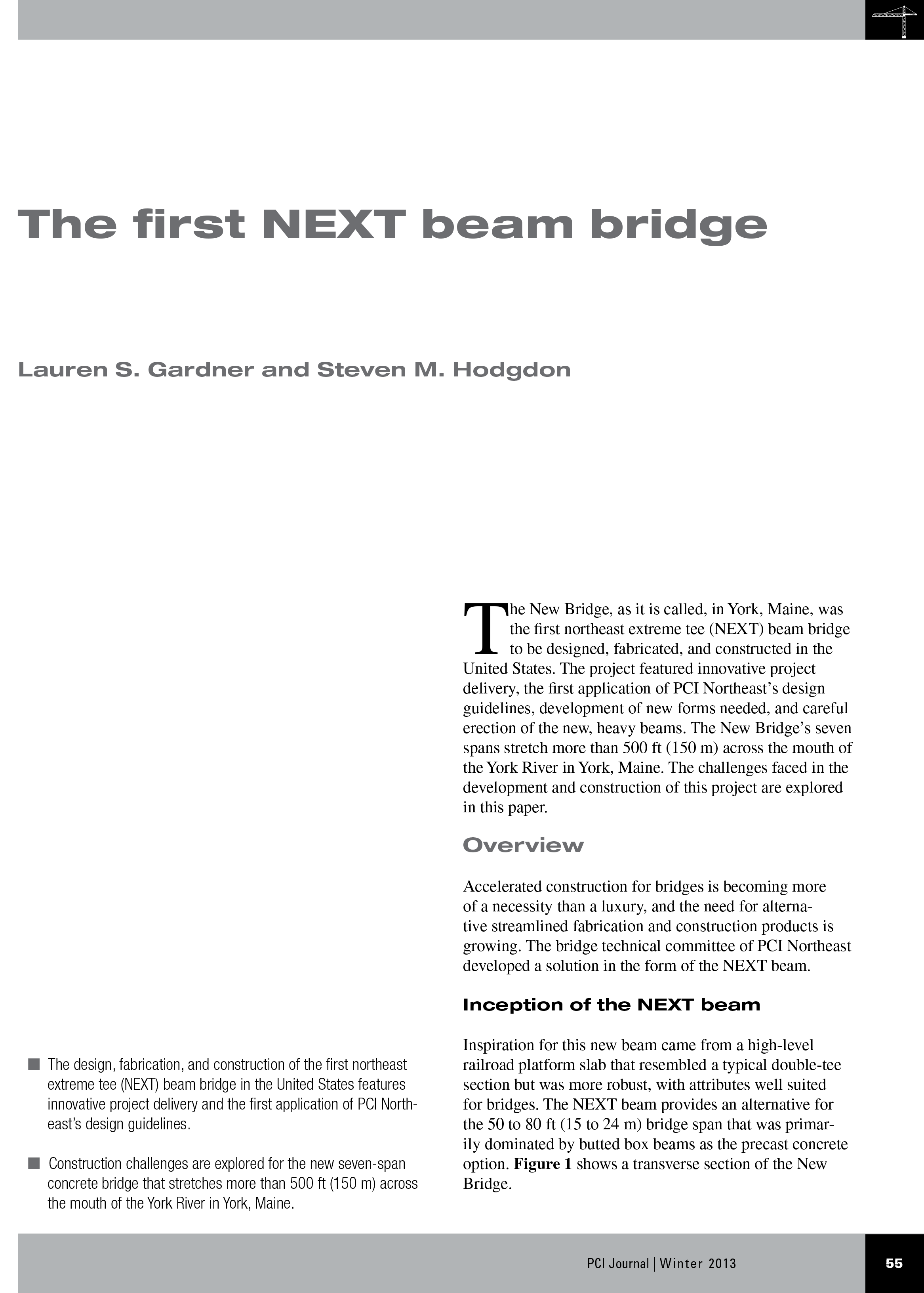Precast NEXT Beams
Adding another “weapon to the arsenal” against mounting infrastructure repair/replacement projects across the country, the NEXT Beam was developed by the Northeast State DOT’s in conjunction with consultants and precast concrete producers to serve as a solution to the bridge community’s need for an improved, high functioning beam. These types of beams tackle common bridge construction problems in an efficient, no nonsense manner.
What are NEXT Beams?
The NEXT Beam is a regional standard that was developed by the Northeast State Departments of Transportation and local fabricators. Similar to other standard bridge sections, they are available from multiple fabricators and are not proprietary. In the PCI Gulf South region, Forterra in Pelham, AL is an experienced producer of the NEXT Beam. The development of this new type of beam addressed some recurring issues such as:
The need for shorter spans
Costly expense of adjacent box beams
Accommodation of utilities
Inspection difficulties due to limited side access
Aids in ABC -Accelerated Bridge Construction
All these issues and more were improved with the fabricator-friendly, cost-friendly NEXT Beam that can be produced in variable widths with spans ranging from 40-90 feet.
Technical Resources
Available under the Design Resources tab are PCI Bridge Design Manual specs for NEXT D and NEXT F.
The idea of the NEXT Beam came to life after an observation of an unrelated precast product in a precast concrete manufacturing plant. Read about the chain of events that led to the development of the NEXT Beam.
The first of its kind, The New Bridge (Route 103) in York, Maine was the very first NEXT Beam bridge project completed.
How are they made?
In this time lapse video, Dailey Precast in Vermont shows a highly skilled workforce in a PCI certified precast concrete plant manufacturing a NEXT Beam. The quality controlled process and offsite environment allows for production to be free from common issues, such as weather related interruptions, while maximizing worker safety and efficiency. The completed beam is immediately ready to be trucked to the installation site “just in time” so there is no need for storage at the job site.
What are the benefits of NEXT Beams?
Minimize Labor: Because precast products, such as NEXT Beams, are produced in a plant using reusable forms, the need for manpower is reduced.
Accelerated Schedule: The manufacturing process moves forward without interruption when it occurs at an offsite precast plant. The bridge beams are installed quickly resulting in less disruption to traffic flow in the community.
Cost Saving: Reducing manpower + accelerated work schedule + greatly reduced life cycle costs = significant savings.
Reduced Future Maintenance: Unlike steel bridges or wooden bridges that require ongoing maintenance such as painting or replacement, concrete bridge components are highly durable and function well in extreme weather conditions. For example, the Walnut Lane Bridge north of Philadelphia is the first precast prestressed bridge ever built. It is currently 70+ years old and going strong. Excellent return on investment!
Accelerated Bridge Construction dovetails nicely with the use of precast bridge components such as the NEXT Beam. The ability to minimize time in a work zone by using strategic planning and “ready to install” products speeds the entire process along translating in less disruption for commuters and less opportunity for job site accidents.
Case Studies in PCI Gulf South Region
Phase 1 of the Cribbs Mill Creek Drainage project provided the opportunity for the first NEXT Beam usage in the state of Alabama.
Delivered and erected in just four days, Forterra in Pelham, AL provided sixteen NEXT Beams to span a 280 foot bridge in Decatur, GA.
So it’s said…”necessity is the mother of invention”. The need for a more efficient bridge beam design found its way into the transportation community through the development of the NEXT Beam and it is systematically changing the way bridges are repaired/replaced with an emphasis on cost effectiveness, durability and design flexibility.






